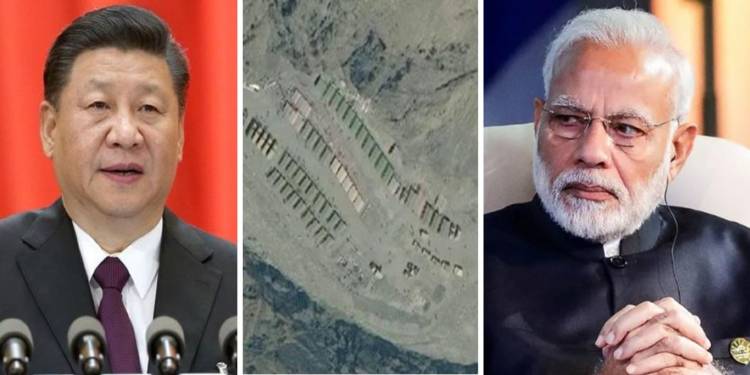China’s “Hindi Chini bhai bhai” moment of 2020 is here, as the Dragon has made certain diplomatic overtures to India amidst the growing tensions on the Sino-India border. China had used the slogan time and again before stepping up aggression in 1962, and this time around it is trying to deflect international attention by using diplomatic channels. Beijing might have blinked diplomatically but it is not backing off militarily, though the Chinese Defence Ministry maintains that the situation on the border is “stable and controllable”.
Therefore, Chinese Ambassador to India, Sun Weidong, spoke like a diplomat for the first time and said, “Nowadays, China-India relations stand at a new starting point & usher in new opportunities. We should enhance mutual trust, focus on cooperation, manage differences & seek common development. Let’s take a “dragon-elephant tango” on a glorious journey in the next #70 years!” But while he suddenly feels that “Dragon and Elephant can dance together”, the PLA troops continue dancing down to the Line of Actual Control near eastern Ladakh.
Recent reports and satellite images show how the Chinese build-up is intensifying near the Line of Actual Control (LAC)- the effective Sino-India border. According to The Indian Express, highly placed sources say that an analysis of the satellite images reveals that there has been extensive deployment of towed artillery and mechanised elements on China’s side of the LAC.
Satellite images are said to have confirmed the presence of at least 16 tanks along with a mix of infantry combat vehicles. The daily has further reported that according to sources, flatbed trucks, excavator machines, dumper trucks have also been spotted. All these developments suggest that Beijing is preparing permanent defences close to the LAC.
Sources also said, “Bunkers, troops on ground and machine-gun emplacements can also be seen which may also show that the Chinese have been anticipating an offensive and have made defensive positions too.”
The ongoing tensions are being seen as unprecedented with no recent memory of the People’s Liberation Army’s (PLA) artillery movements during Sino-India stand-offs. Moreover, satellite images published by NDTV show massive construction activity at an airbase only 200 kilometres away from the Pangong Tso Lake, from where an intense face-off between the Indian Army and PLA troops was reported for the first time earlier this month.
A close-up image of the airbase shows four fighter jets, believed to be either J-11 or J-16 fighter jets of China’s People’s Liberation Army Air Force.
This month the PLA *did* move towed artillery, trucks, infantry combat vehicles to positions a few kms behind the LAC near the Hot Springs/Gogra. To my knowledge this is new. I don't recall similar reports/images of PLA artillery movements during prior standoffs in 2013 and 2014. https://t.co/p4oPaKtBYs
— Jeff M. Smith (@Cold_Peace_) May 29, 2020
The unprecedented Chinese troop build-up, and the seemingly reconciliatory statements by Sun Weidong and Chinese Defence Ministry have come simultaneously. This is classical Chinese deception. When Beijing realised that its aggressive posturing at the LAC had come into the spotlight, it diverted attention through diplomatic channels.
Beijing understood that aggression at the LAC only exacerbated the hostility against it. And when the US President-cum-mediator specialist, Donald Trump also offered his services, China knew that it was time to take the spotlight away from the military build-up.
The situation remains critical and India must match-up to China’s aggressive posturing. Lt. General S L Narasimhan, member of the National Security Advisory Board (NSAB) has also said that the Chinese side appears more aggressive compared to the Doklam stand-off in 2017. But he added, “It is not required to predict the numbers…. if there is a build-up from Chinese side, there will be an equal build-up from our side.”
China has already built infrastructure on its side of the LAC, but Narasimhan said “they seem to be upsetting the infrastructure development when it takes place on our side”. Diplomatically, Beijing might be giving an altogether different message but militarily it is trying to stall India’s infrastructure development on Indian territory.
China is trying to cut India to size with the build-up situation unravelling in the eastern Ladakh area. Beijing fears that India will join the global outrage against China in a post-Coronavirus world, sooner or later. Therefore, it is trying to tell India what is at stake through aggressive military posturing. India has grown assertive about its territories- Gilgit-Baltistan and Aksai Chin occupied by Pakistan and China respectively.
For China too, this region is strategically important in terms of the China Pakistan Economic Corridor (CPEC) and access to Pakistan which will help China in reaching the Gwadar port into the Indian Ocean. China is threatening confrontation in order to thwart India’s ambitions of filling in the space that China is set to lose due to the ongoing Pandemic.
India must continue standing up to Chinese aggression and also not let Beijing have its way insofar the international narrative regarding the ongoing situation in Ladakh is concerned.


































